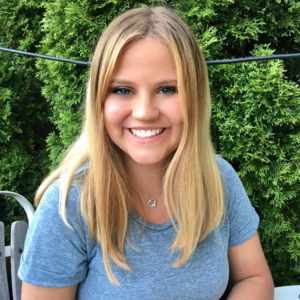Drinks filled with caffeine and alcohol are found almost everywhere. And logically it makes sense — party-goers want to mix alcohol with caffeine to give themselves a quick pick-me-up. Often times, drinking comes after a long day and party-goers are tired, but caffeine will keep them awake and ready to party. Two birds with one stone, right? But the reality is, it’s incredibly dangerous to be mixing alcohol and caffeine.
On their own, both alcohol and caffeine have risks. When not used in moderation, it’s possible to overdose on both caffeine or alcohol. Of course, that’s the most dangerous risk, but other risks can be harmful to your health as well.
You feel more sober

Quick review from middle school health class: Alcohol is a depressant, and caffeine is a stimulant. So, when you mix the two together, the caffeine has the ability to mask the depressant side-effects of alcohol. In other words, people who are mixing alcohol with caffeine tend to rate themselves more sober than they actually are.
According to research conducted by Cecile Marczinski, a psychologist at the University of Northern Kentucky, those who consumed caffeinated alcoholic beverages rated their own drunkenness lower than their peers who consumed the same amount, but only alcohol.
This is incredibly problematic because those who perceive themselves to be more sober than actuality are more likely to engage in dangerous behaviors, such as drunk driving.
In fact, in Marczinski’s study she mentions that “increased rates of impaired driving and injuries have been associated with [alcohol mixed energy drink] consumption.” Similar research suggests that those who leave the bar after a night of mixing alcohol and caffeine are four times more likely to drive home.
#SpoonTip: Even if you feel sober, you should never drink and drive.
You can drink longer

As previously mentioned, caffeine is a stimulant which makes you more attentive and alert. The effects of caffeine usually last for about six hours, which consequently, extends that time when you feel alert, and that makes you want to drink for a longer period of time.
A common side-effect of drinking alcohol alone is the sensation of drowsiness. However, caffeine can often mask that side-effect and enable drinkers to consume more alcohol than they ordinarily would.
This is exemplified in research conducted by Rebecca McKetin, which showed that subjects who drank a vodka-Red Bull had a stronger urge to continue drinking compared to their peers who drank vodka and soda water. According to McKetin’s research, adding Red Bull made subjects twice as likely to want to drink more.
You’re more likely to binge drink

The Center for Disease Control has publicly supported research that says drinkers aged 15 to 23 who are mixing alcohol and caffeine are four times more likely to binge drink at high intensity than drinkers who are not mixing alcohol and caffeine. (According to the CDC, binge drinking is consuming more than six drinks per 1 episode).
Binge drinking, and its popularity among young adults, has lead to what is known as “blackout drinking culture.” Other research has suggested that those who frequently mix alcohol and caffeine together drink more often than those who drink alcoholic beverages with no caffeine.
It’s critical to understand that the majority of this research has been done in limited quantities because encouraging excessive and frequent consumption of alcohol is dangerous to humans. Much of this research has been conducted on young adults, the age group that most frequently consumes caffeinated alcoholic beverages.
Find caffeine-free alternatives

Although it may be tempting to mix caffeine and alcohol, the effects it has upon your body aren’t worth it. If you’re going to drink, try and find alternatives to your favorite chaser or mix-in that have no caffeine, like seltzer or juice. That way, you’ll be better able to recognize your own levels of intoxication and avoid binge drinking.
#SpoonTip: If you’re going to drink, please do so responsibly. Spoon University does not support underage or binge drinking.


